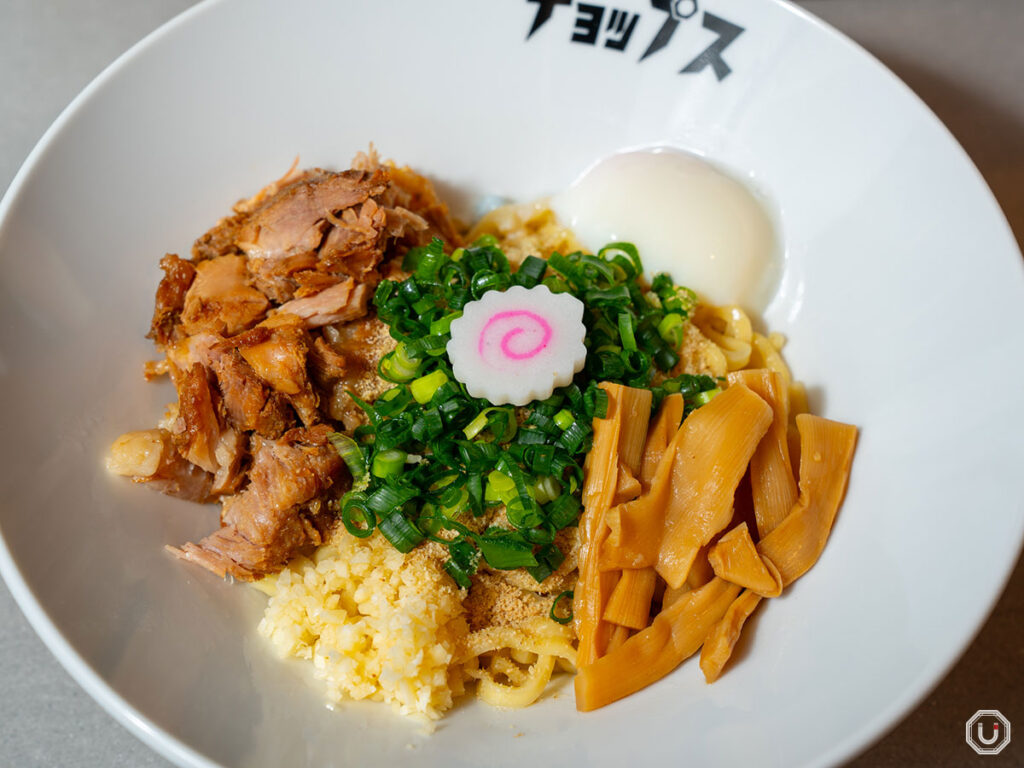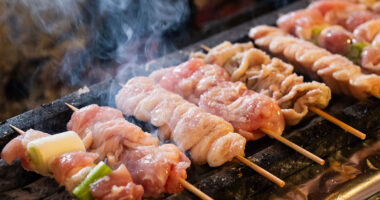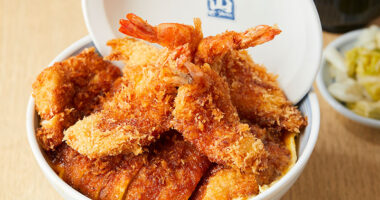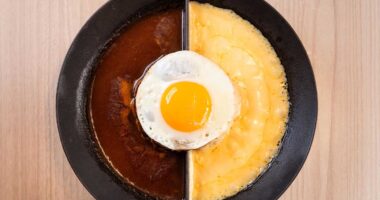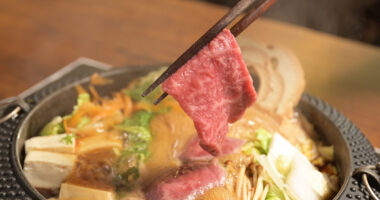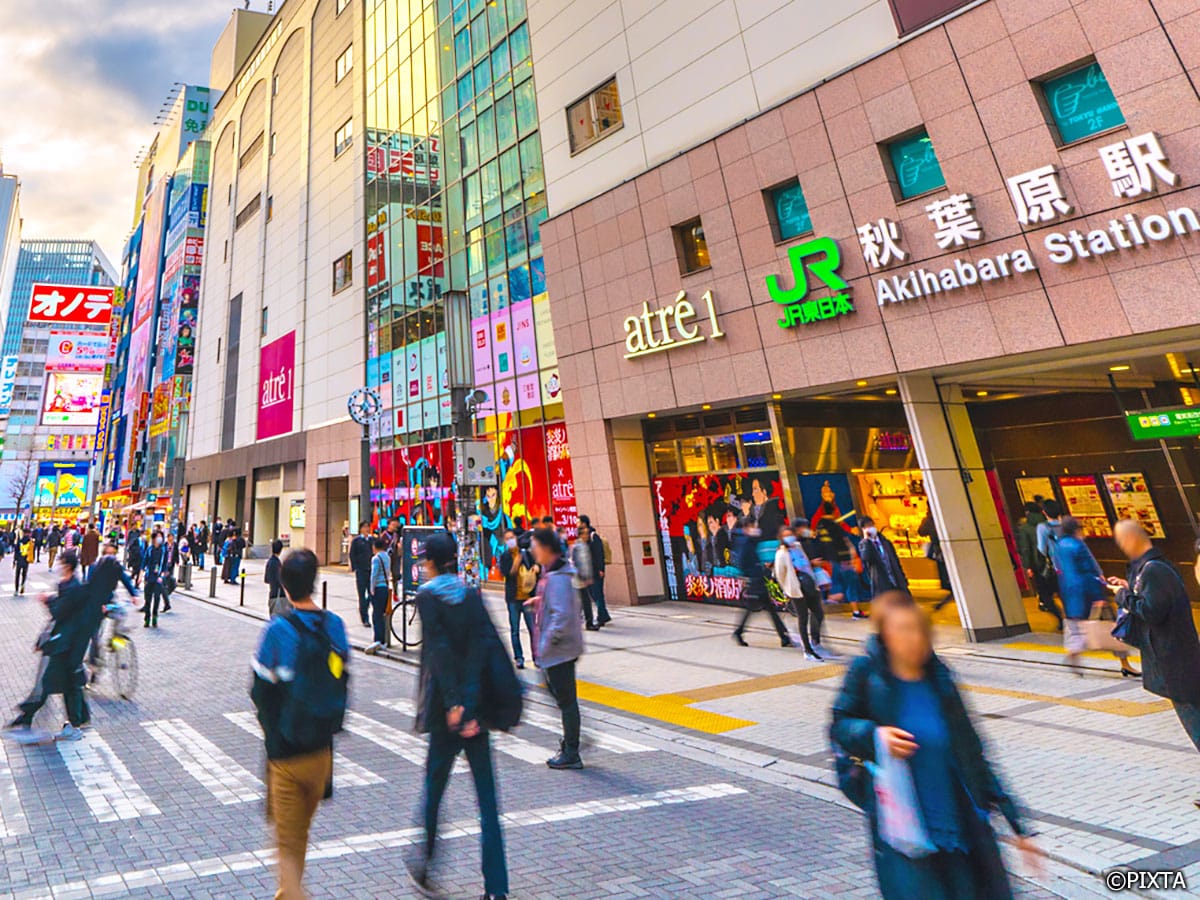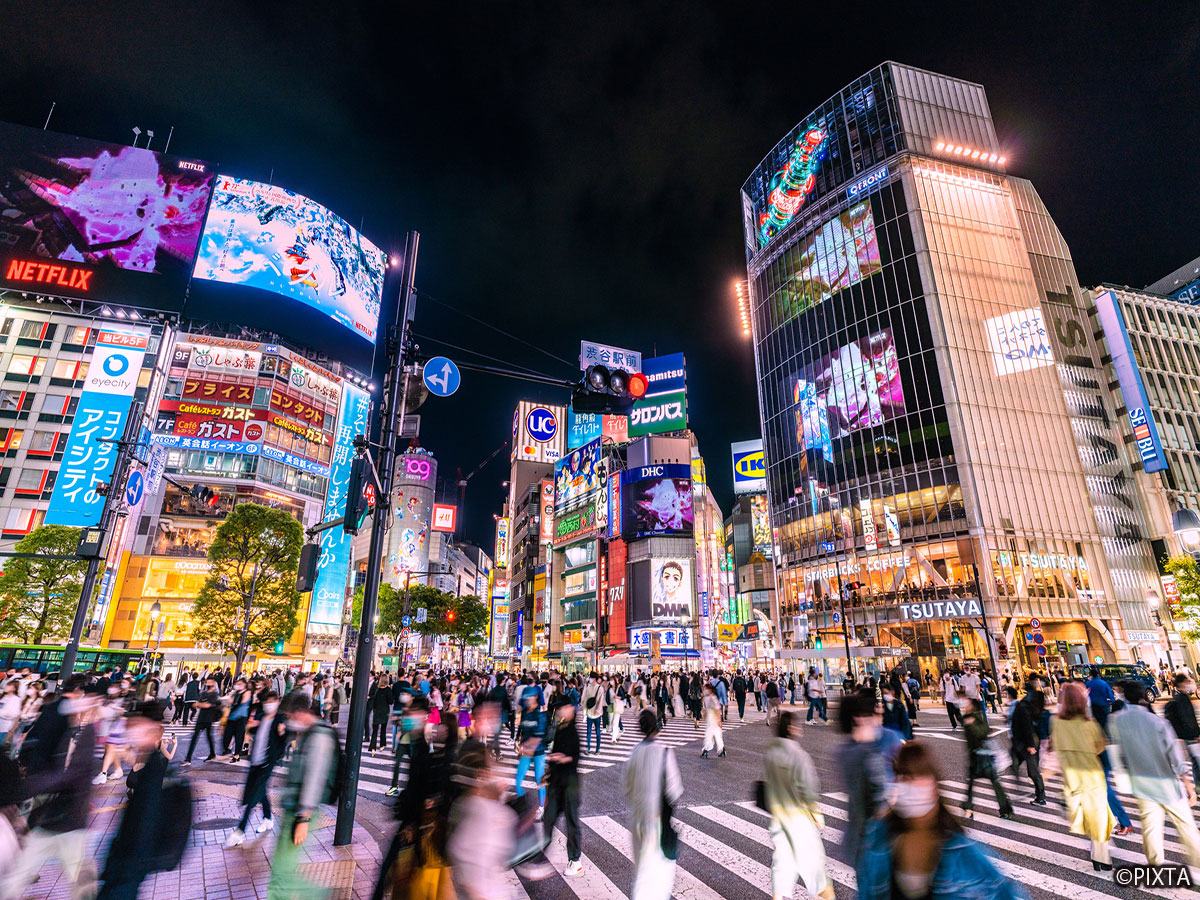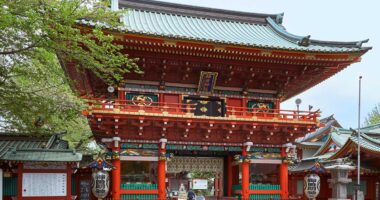If you’re visiting Japan and think ramen is a must-try, you should definitely know about a unique noodle dish called “abura soba” (oil noodles).
At first glance, it looks like ramen, but surprisingly, it contains no soup at all.
Instead, you mix a special tare (sauce) and fragrant oil with the noodles, allowing you to directly enjoy the rich flavors and aroma of the ingredients.
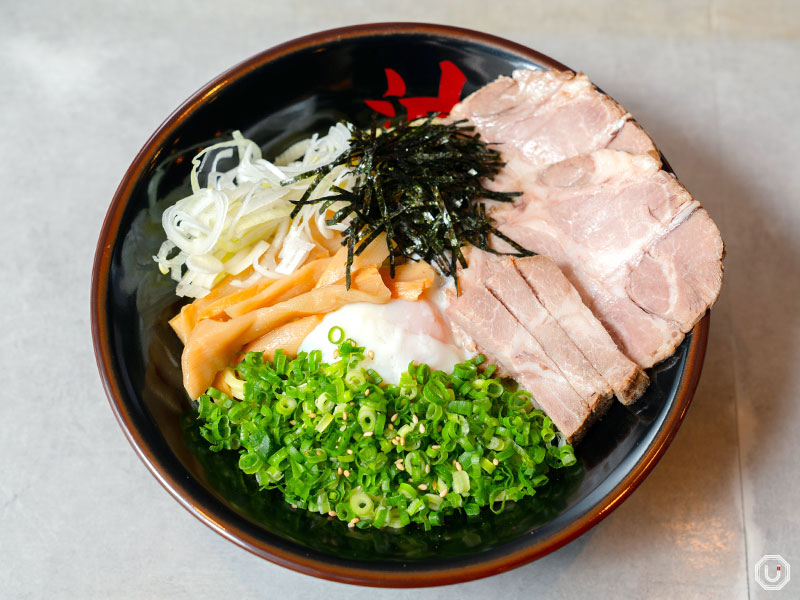
Abura soba at Tokyo Aburagumi Souhonten in Shibuya
As another appealing feature, abura soba delights with a rich yet light aftertaste, offering satisfaction that health-conscious diners can also enjoy confidently.
Even more unique is the wide variety of condiments typically lined up on tables at abura soba restaurants.
You can combine vinegar, chili oil, garlic, pepper, and more to your liking, enjoying the evolving flavors as you eat—this is one of the true pleasures of abura soba.
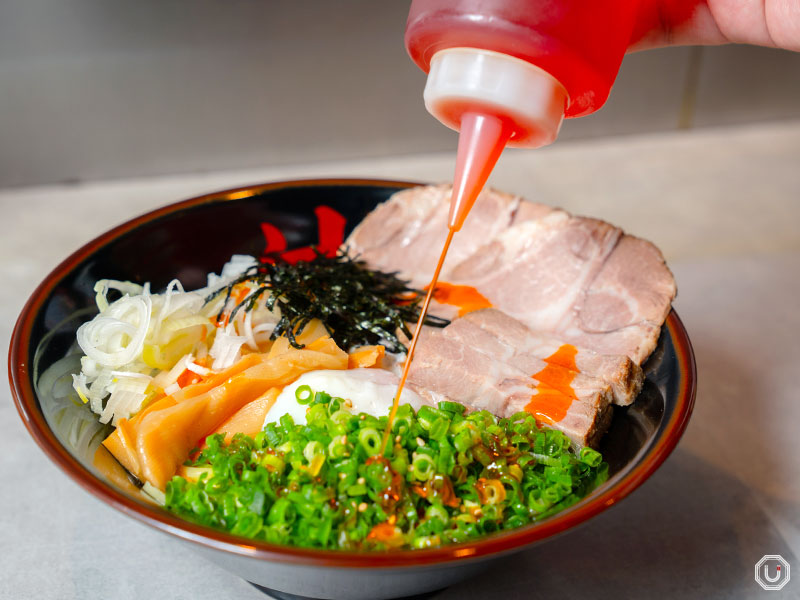
Abura soba at Tokyo Aburagumi Souhonten in Shibuya
Each bite reveals a different flavor profile, making abura soba a new genre of ramen that offers many delicious experiences in just one bowl.
What is abura soba? A new soupless ramen experience
Abura soba is a somewhat unique member of Japan’s noodle culture. It looks similar to ramen, but the major difference is that it contains no soup at all.
It’s a simple yet profound dish, consisting of medium-thick to thick noodles boiled piping hot, then tossed with sauce and fragrant oil.
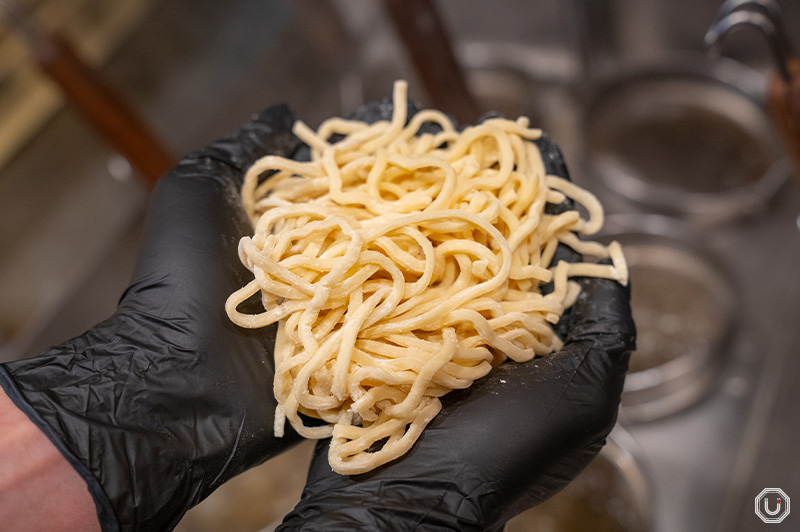
Noodles used in abura soba at Shibuya Mazesoba Chops in Shibuya
The basic rule is to thoroughly mix the sauce and oil—which are placed at the bottom of the bowl—with the noodles before eating.
The chewy texture of the noodles and the umami soaked into the sauce are the defining charms of abura soba.
In Japan, abura soba is gaining popularity especially among young people as a noodle dish distinct from ramen. Nowadays, many specialty shops offer a casual, welcoming vibe, making them easy to visit.
Abura soba sauces and flavors: touches that define each shop
The biggest factor that defines abura soba’s deliciousness is the sauce and fragrant oil mixed with the noodles.
Every shop takes great pride in its sauce, its “calling card” of distinct flavor.
The classic sauce is soy-based, but recipes vary widely—some blend in dried sardines or bonito fish stock to deepen umami, others add chīyu (chicken oil) or pork back fat for richness.
You can enjoy an entirely different character depending on which shop you visit—from light and refreshing to full-bodied and intense flavors.
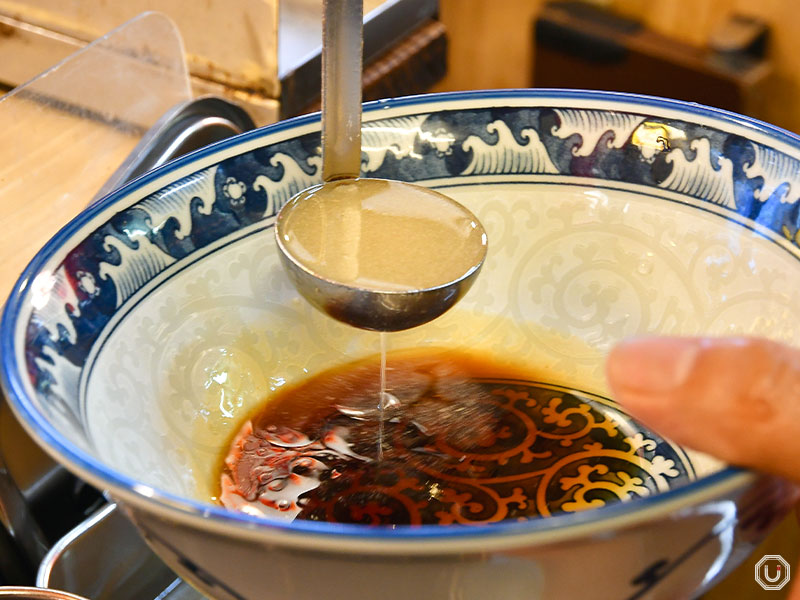
Tare sauce used in the abura soba at Akihabara Tsukemen Aburasoba Gaku in Akihabara
Sesame oil and chili oil are the main fragrant oils, providing a soft aroma and a punchy flavor that captivates your palate at the first bite.
And don’t forget the condiments lined up on the table. Standard items like vinegar, chili oil, and mayonnaise are essential for enjoying flavor variations.
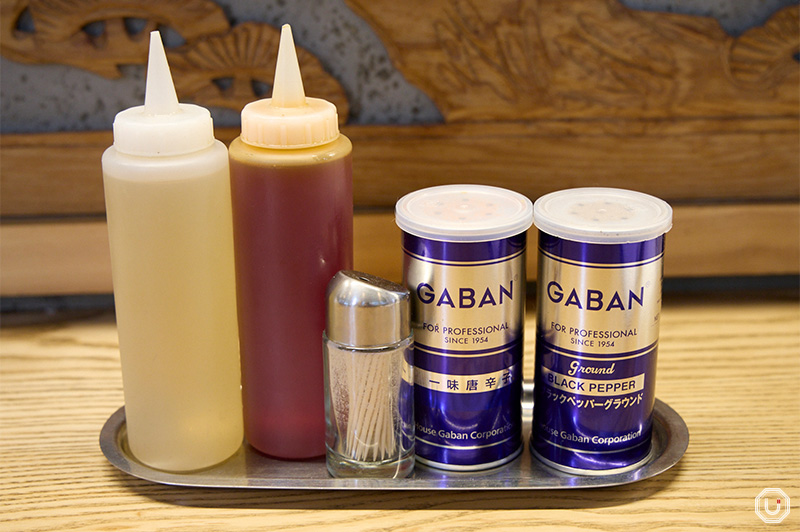
Tableside condiments and seasonings available at Abura Soba Nihon Aburatō Shibuya in Shibuya
Adding just a little during the meal opens up an entirely new deliciousness—that’s one of the great joys of abura soba.
Abura soba toppings to try: a rich lineup of flavors and textures
Abura soba’s flavor is greatly deepened by its many toppings.
The classic topping is, of course, chāshū (Japan’s version of char siu). The tender, juicy meat pairs perfectly with the sauce-coated noodles.
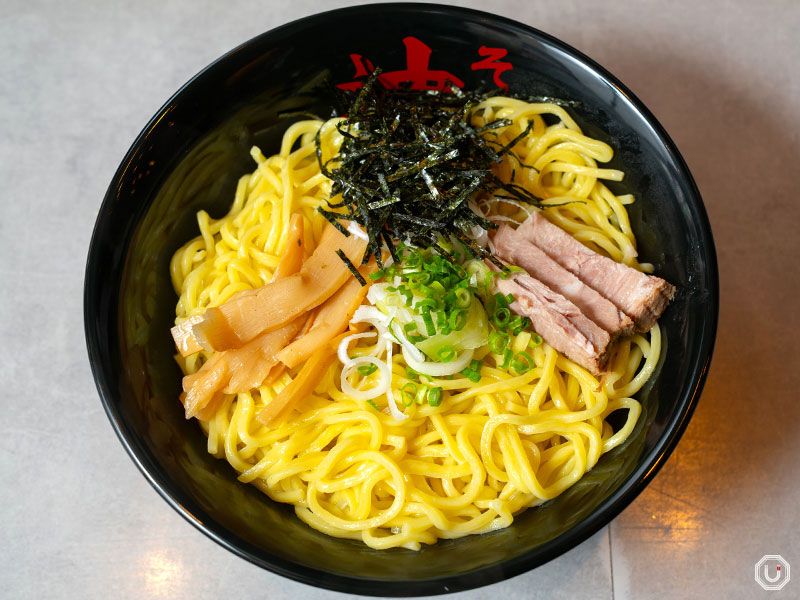
Abura Soba Spicy Miso taste (Double) at Tokyo Aburagumi Souhonten in Shibuya
Crunchy toppings like menma (fermented bamboo shoots), chopped green onions, and bean sprouts provide a nice texture contrast.
Adding onsen tamago (soft-boiled egg) or raw egg adds creaminess for a richer taste.
For those who want to try unique toppings, check out original menu items at each shop.
For example, the popular Shibuya shop “Abura Soba Nihon Aburatō Shibuya” is famous for its signature “Tarako Butter Kamatama Abura Soba,” (noted on the English menu as “Abura Soba with raw egg, cod roe, butter, Parmesan cheese, and noodle soup base.”)
The spicy kick of cod roe combined with the richness of butter creates an irresistible flavor.
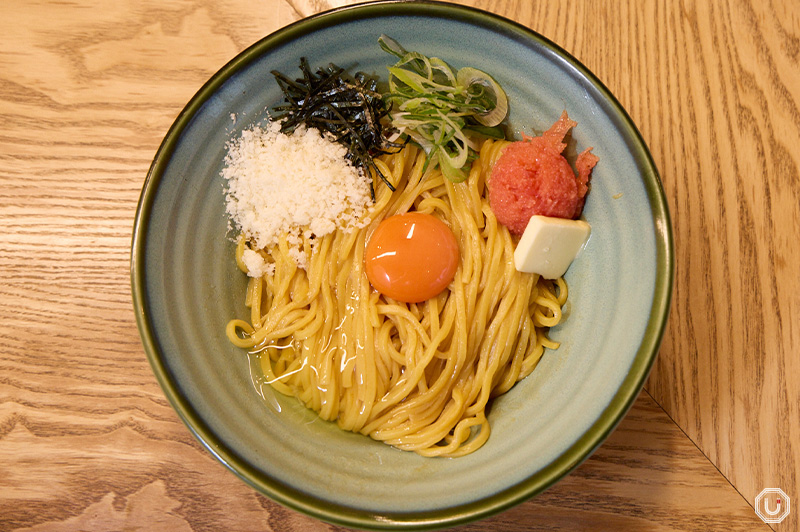
Abura Soba Nihon Aburatō Shibuya at Abura Soba Nihon Aburatō Shibuya in Shibuya
Some shops also offer a variety of paid toppings.
At “Shibuya Mazesoba Chops,” also in Shibuya, you can add “Spicy Fish Powder Chili Oil,” crispy “Fried Onions,” rich “Hokkaido Butter,” or “Parmesan Cheese”—all priced between 50 and 100 yen (tax included).
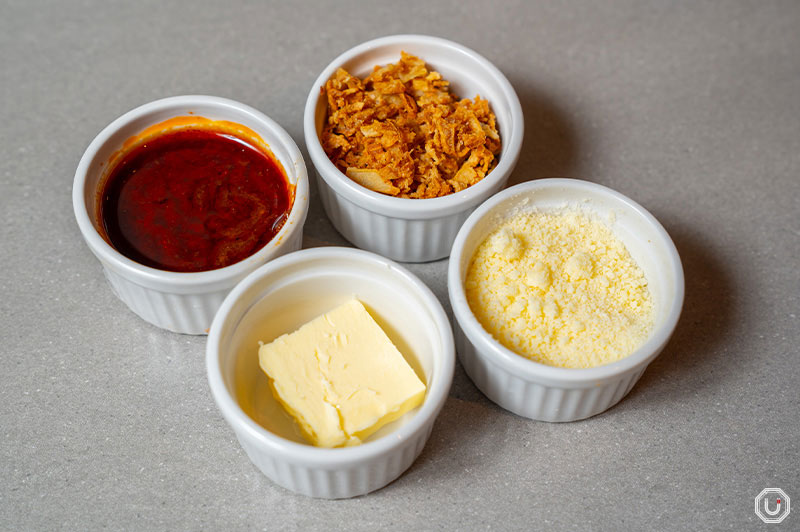
Paid toppings at Shibuya Mazesoba Chops in Shibuya
With these paid toppings, the range of flavor variations is endless, and customizing to your own taste is one of the great pleasures of abura soba.
How to eat abura soba: tips to really bring out the fun and flavor
To fully enjoy abura soba’s deliciousness, there are a few tips to keep in mind.
First, thoroughly mix the sauce and fragrant oil accumulated at the bottom of the bowl with the noodles. This is the textbook starting point of abura soba.
The more you mix, the better the sauce coats each strand of noodle, spreading rich flavor throughout your mouth.
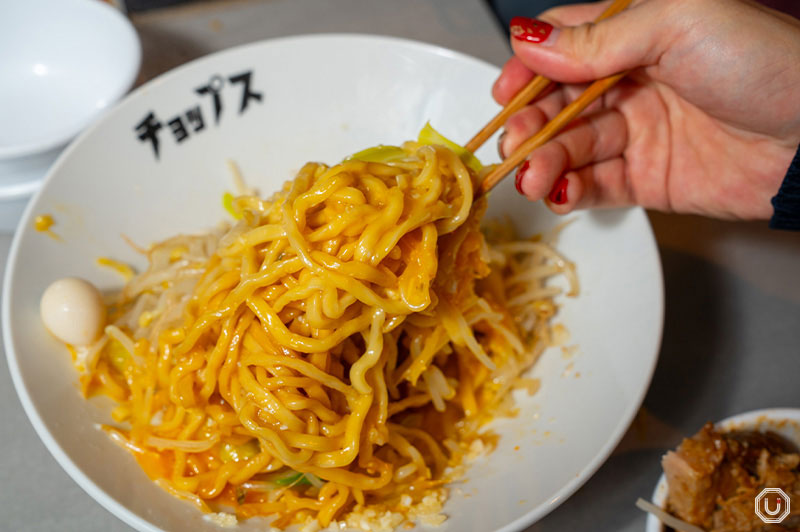
Next, make use of the seasonings and condiments usually available at the table. Vinegar, chili oil, and chili pepper are perfect for adding flavor variation. Add them little by little to adjust to your taste.
If you want to add some creaminess to your bowl, try adding mayonnaise or butter.
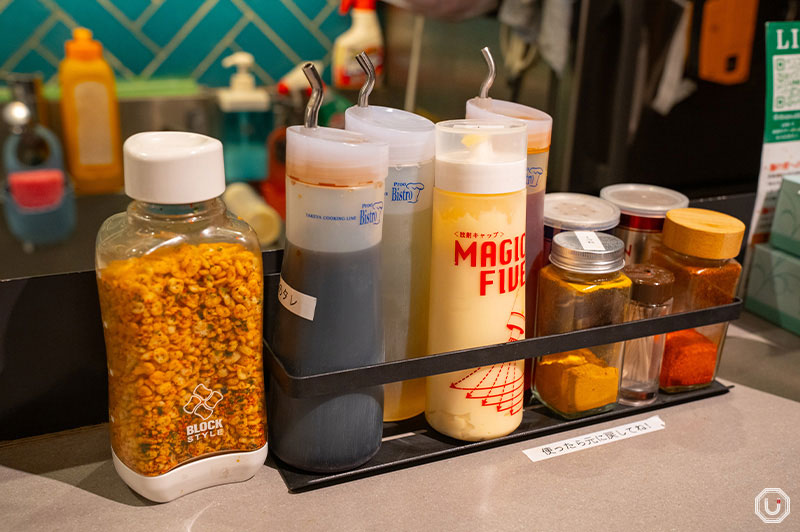
Tableside seasonings and condiments at Shibuya Mazesoba Chops in Shibuya
Also, some shops let you choose noodle firmness and portion size. Ordering according to your preferences will make for a more satisfying bowl.

At Akihabara Tsukemen Aburasoba Gaku in Akihabara, you can increase your portion size for free up to 500 g (17.6 oz).
Finally, the secret to delicious abura soba is to eat it while it’s hot.
Once it cools, the sauce and oil don’t coat the noodles as well, and the flavor becomes muted—so eat promptly once served.
Keep these tips in mind, and you’re ready to enjoy your perfect abura soba experience!
※Menu items, prices, and store details are accurate as of August 2025.
